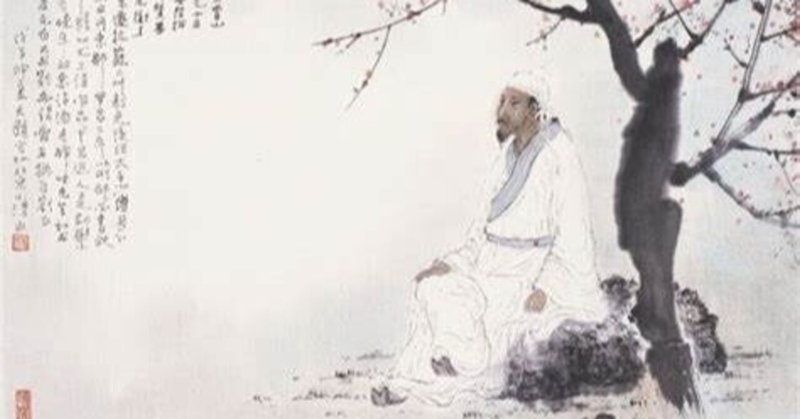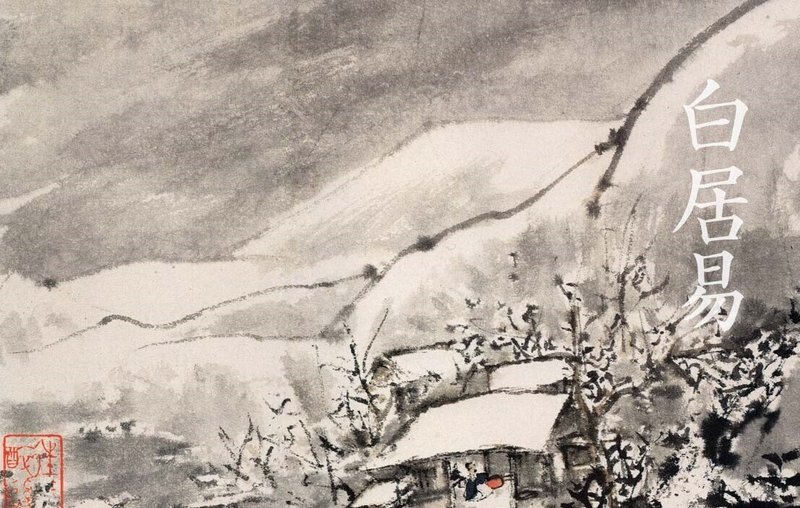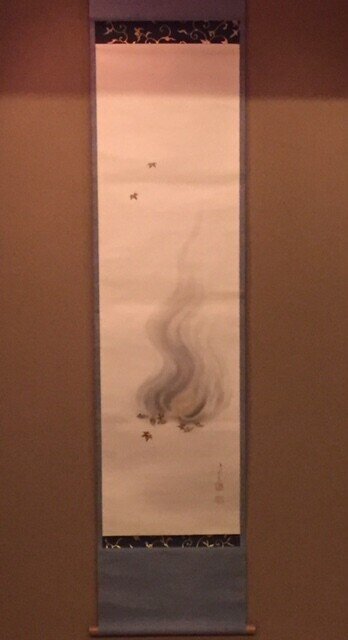
紅葉の「落ち葉焚き」となれば、白楽天【一茶庵稽古追想】 When it comes to "burning fallen leaves" of autumn leaves, Bai Juyi comes to mind.
少し早い話であるが、12月13日は「事始め」。正月を迎える準備を始めるために、むかしからこの日が定められている。
以前、その13日に稽古した折、今年の締めくくりと、新しい年に向けて一意専心の想いで稽古するようにという気が込められていた。
It's a little early, but December 13th is "beginning". This day has been set for a long time to start preparing for the New Year.
Previously, when I practiced on the 13th, I was motivated to conclude this year and practice with a unique devotion for the new year.
その日の稽古のテーマは「白楽天」だった。この名を聞けば、煎茶を稽古している者は、中国 唐代の代表的詩人を思い浮かべるはず。だが、俗世界にどっぷりとつかっていたせいか、中華料理店名が頭をよぎった。これでは来年もまた思いやられる・・・(笑い)
The theme of the lesson of the day was " Bai Juyi ". When you hear this name, those who practice sencha should think of a representative poet of the Tang dynasty in China. However, the name of the Chinese restaurant passed through my head, probably because I was fully used in the world. This will make me think again next year ... (laughs)
白楽天は、あざなである。実名は「白居易(はくきょい)」。中国の李白、杜甫とならび三大詩人として名を馳せ、我々の中高時代の国語の教科書にも登場した人物である。
しかし、恥ずかしながら当時学んだ事は残骸の欠片もない。それを半世紀経ったいま学ぶことは愉悦至極である。
Hakurakuten(Bai Juyi) is a bruise. His real name is "Hakukyoi(Bai Juyi)". He is famous as one of the three major poets along with Li Bai and Du Fu of China and is a person who appeared in our middle and high school language textbooks.
However, I am ashamed to say that there are no fragments of wreckage that I learned at that time. It is a pleasure to learn it now, half a century later.

その日のお軸は、前回の稽古と同じものが掛かっていた。前回のものと切り口が違った。見ての通り「落ち葉焚き」の画である。賛もない。モミジの落ち葉が燃えている、ただただシンプルな画である。
さて、この吹寄せの画を観て "どこで焚き火を?" "だれが?" という宗匠から問われるはずなので、われわれは想像を巡らした。"野原" "お寺の庭" などと答えを用意していたが、場所や誰が、という特定は必要ない、ということに。
では、どんな答えを宗匠は求めたのか。それは、「ここ(稽古場)」で、われわれが焚き火をしている、という設定。つまり「同時同場」という煎茶ならではの仕立てである。
The axis of the day was the same as the previous lesson. The cut was different from the previous one. As you can see, it is a picture of "fallen leaves burning". I have no praise. The fallen leaves of the maple are burning, it's just a simple picture.
By the way, when I saw this picture of the bonfire, I was supposed to be asked by the masters, "Where is the bonfire?" And "Who?", So we wondered. I prepared answers such as "field" and "temple garden", but it was not necessary to specify the location or who.
So what kind of answer did the master ask for? It is a setting that we are bonfire in "here (rehearsal hall)". In other words, it is a tailoring unique to Sencha called "simultaneous same place".
さらに、この画の吹寄せの焚き火で湯を沸かすのもいいだろう、酒を燗するのもいいだろう。空想を広げていくと、楽しくなってくる。子ども頃の情景も浮かんでくる。
さて、ここまできても結論が見えてこない。それは古典の知識が備わっていないことにある。この画を観て「白楽天」と読み取ることができるようになるのはいつのことだろう。
In addition, you can boil water with the bonfire of this picture, or you can boil sake. As you expand your fantasy, it becomes more fun. The scene of childhood also comes to mind.
Well, I can't see the conclusion even if I come here. It lies in the lack of classical knowledge. When will you be able to read this picture as "Bai Juyi"?

では、白楽天の有名な詩を振り返ることになった。下記の詩の解説を聞くと、白楽天が故郷の友人に送った詩である。かつて故郷で友人と一緒に遊んだことを懐かしみ、また一方、白楽天は故郷に帰れないことを嘆くとともに、故郷へ帰れる友人を羨み、そして慰めている内容のものである。
Now, let's look back on the famous poem of Bai Juyi. Hearing the commentary on the poem below, it is a poem that Bai Juyi sent to a friend in his hometown. He misses playing with his friends in his hometown, Bai Juyi laments that he can't go home, and envy and comfort his friends who can go home.
曾於太白峰前住
數到仙遊寺裏來
黑水澄時潭底出
白雲破處洞門開
林間暖酒燒紅葉
石上題詩掃緑苔
惆悵舊遊無複到
菊花時節羨君回
かつて太白峰前に住み、しばしば仙遊寺を訪ねた、黒水が澄めば淵の底が見え、白雲が途切れれば洞門が開いた。
林間酒を温めるために紅葉を焼き、石上詩を題せんとして苔を削り取る、悲しいのはもう二度とこのような遊びができないことだ、というのもこの菊花の季節に君は故郷へ帰るのだから
という意味になる。
l used to live in front of Taihakuhozen and often visited Senyuji Temple. When the black water was clear, I could see the bottom of the pool, and when the white clouds were cut off, the cave opened.
Bake autumn leaves to warm the sake, scrape off the moss under the theme of Ishigami poetry, the sad thing is that you can never play like this again, because you will return to your hometown during this chrysanthemum season.
It means that.
この詩の中にある「林間暖酒燒紅葉、石上題詩掃緑苔」という句がある。これが白楽天の有名な「対句」として知られている。つまり、紅葉の落ち葉焚きの画をみれば、「白楽天」につながっていく。
In this poem, there is a phrase, " warm sake, autumn leaves, Ishigami title poem, scavenging green moss." This is known as Bai Juyi's famous "antithesis". In other words, if you look at the picture of the fallen leaves burning, it will lead to "white optimism".
煎茶は前回と同じように上投法と煮茶法、そして同時同場と考え、最後に急須にお酒を入れ燗をし喉を潤し事始めの稽古を終えた。
Sencha is considered to be the same as the last time, the jyoto method, the shocha method, and the same place at the same time, and finally sake in Kyusu I put it in and simmered it to moisturize my throat and finished the training at the beginning.
※この記事は2016年12月「心と体のなごみブログ」に掲載したものを加筆し転載
リポート&写真/ 渡邉雄二 上2枚の写真/ 白居易画像より転載 場所/ 文人会一茶庵 Reported & Photos by Yuji Watanabe
よろしければサポートお願いします。日本の伝統文化に関心を寄せています。若いころに文化圏の異なる地域の方たちとの交流で日本のことをあまりにも知らなかったことに気づかされ、それがきっかけで広く浅く学んでいます。拙いレポートですが、お目に留めていただければ幸です。
